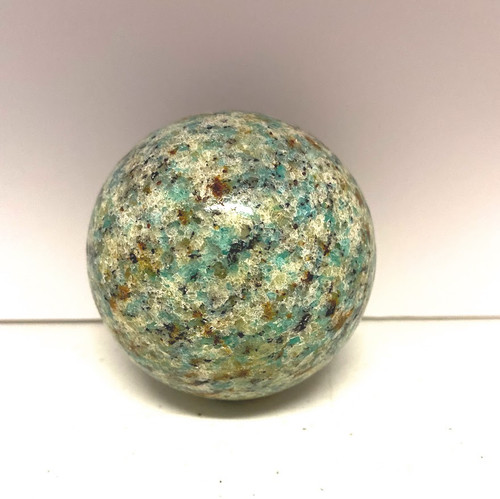Product Description
Amazonite Specimen priced by weight in grams
Country of origin: India.
Mineral Information:
Amazonite is a beautiful gemstone that is often admired for its soothing blue-green color. It belongs to the feldspar mineral group and is known for its vibrant and unique appearance.
Amazonite typically displays a pale to medium blue-green color, reminiscent of tropical waters. The stone can vary in intensity and may exhibit color zoning or subtle variations within its composition. It often has a translucent to opaque appearance and can sometimes contain white streaks or flecks, known as schiller or aventurescence, which add to its visual interest.
The name "amazonite" is derived from the Amazon River in South America, where deposits of this gemstone were once believed to exist, although no significant sources have been found in the region. Today, amazonite is found in various parts of the world, including Brazil, Russia, Madagascar, and the United States.
Metaphysical Meaning:
Amazonite is often regarded as a stone of soothing and calming energy. It is believed to help reduce stress, anxiety, and emotional trauma. Amazonite is thought to promote a sense of peace, balance, and tranquility, assisting in finding inner harmony and serenity. Amazonite is also associated with enhancing communication and self-expression. It is believed to facilitate open and honest communication, both with oneself and with others. Amazonite is thought to support clarity of thought, confidence in verbal expression, and the ability to set healthy boundaries in relationships. In addition Amazonite is often considered a stone of intuition and insight, as well as to promote balance and harmony.
Mineral Care:
Amazonite, like other feldspar minerals, has a moderate level of hardness on the Mohs scale, ranging from 6 to 6.5. While it is not as fragile as some gemstones, it is still considered relatively softer compared to stones like diamonds or sapphires, which have higher hardness ratings.
The fragility of amazonite can be attributed to its composition and crystal structure. It consists mainly of potassium aluminum silicate, which forms in tabular or prismatic crystals. These crystals can have distinct cleavage planes, meaning they can break more easily along specific directions.
As a result, amazonite can be prone to chipping, fracturing, or breaking if subjected to excessive force or impact. It is also sensitive to changes in temperature and rapid temperature fluctuations, which can cause stress within the crystal lattice and potentially lead to fracturing or cracking.
To help minimize the risk of damage to amazonite, it is recommended to handle it with care and avoid exposing it to sudden temperature changes or harsh impacts. Storing amazonite jewelry or specimens in a protective case or pouch can also help prevent scratching or accidental damage.
Disclaimer:
No information here is intended to diagnose, treat or cure ailments or afflictions of any kind. One should always consult a medical professional if a serious issue presents itself.





















